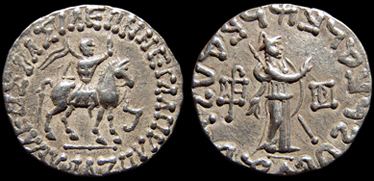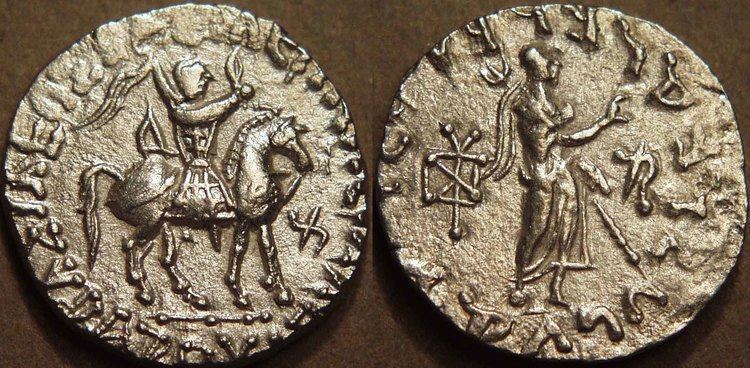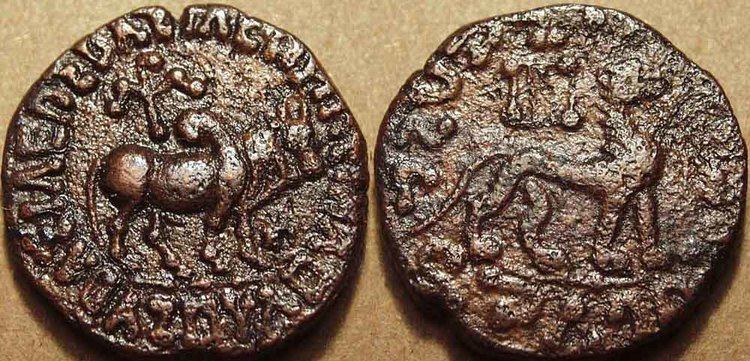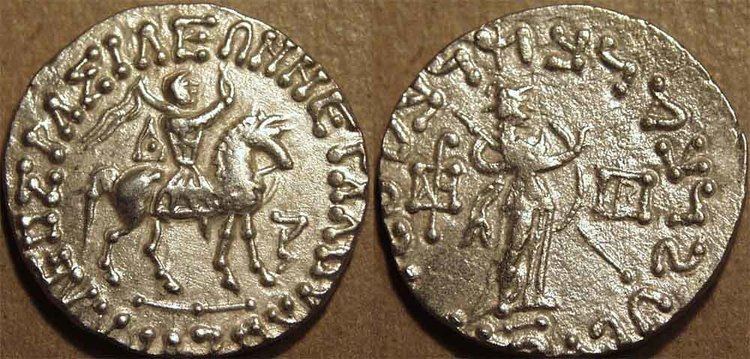Name Azes II | ||
 | ||
Reign Indo-Scythians: perhaps 35–12 BC | ||
Azes II (reigned c. 35–12 BCE) may have been the last Scythian king in Gandhara, western Pakistan. However, due to new research by R. C. Senior, his actual existence is now seriously in doubt, and "his" coins, etc., are now thought to refer to those of Azes I.
Contents

After the death of Azes II, the rule of the Indo-Scythians in northwestern India and Pakistan finally crumbled with the conquest of the Kushans, one of the five tribes of the Yuezhi who had lived in Bactria for more than a century, and who were then expanding into India to create a Kushan Empire. Soon after, the Parthians invaded from the west. Their leader Gondophares temporarily displaced the Kushans and founded the Parthian that was to last until the middle of the 1st century CE. The Kushans ultimately regained Mardan and ancient Taxila c. 75 CE, where they were to prosper for several centuries.

Bimaran casket

Azes II is also connected to the Bimaran casket, one of the earliest representations of the Buddha. The casket, probably Greek work, was used for the dedication of a stupa in Bamiran, near Jalalabad in Afghanistan, and placed inside the stupa with several coins of Azes II. This event may have happened during the reign of Azes (35–12 BCE), or slightly later. The Indo-Scythians are otherwise connected with Buddhism (see Mathura lion capital and the multiple Buddhist dedications of the Apracas), and it is indeed possible they would have commendited the work. However it now thought that a later king, issuing coins in the name of Azes, such as Kharahostes, made the dedication.
Butkhara stupa

A coin of Azes II was found under a pillar with an Indo-Corinthian capital and sculpture of a Buddhist devotee in the Butkara Stupa, suggesting the involvement of Azes II in Buddhist dedications, and a datation for the sculpture corresponding to the reign of Azes II.
Coinage
Coins attributed to Azes II use Greek and Kharoshti inscriptions, depict a Greek goddess as his protector, and thereby essentially follow the numismatic model of the Greek kings of the Indo-Greek kingdom, suggesting a high willingness to accommodate Greek culture. A novel difference of the Indo-Scythians was to show the king on a horse, rather than his bust in profile as did the Greeks.
Other coins of Azes depict the Buddhist lion and the Brahmanic cow of Shiva, suggesting religious tolerance towards his subjects. In the coin depicted to the left Azes is depicted with the inscriptions:
Azes II was long believed to have issued several of the Indo-Scythian coins struck under the name Azes in northern India. All these coins were however likely issued by a single ruler named Azes, as suggested by Robert Senior, when he found an overstrike of a coin attributed to Azes I over a coin attributed to Azes II, suggesting that all the "Azes II" coins were not later than those of "Azes I" and that there was only one king in the dynasty named Azes. This idea had long been advocated by Senior with a number of indirect numismatic arguments, for instance in his encyclopaedia of Scythian coins.
